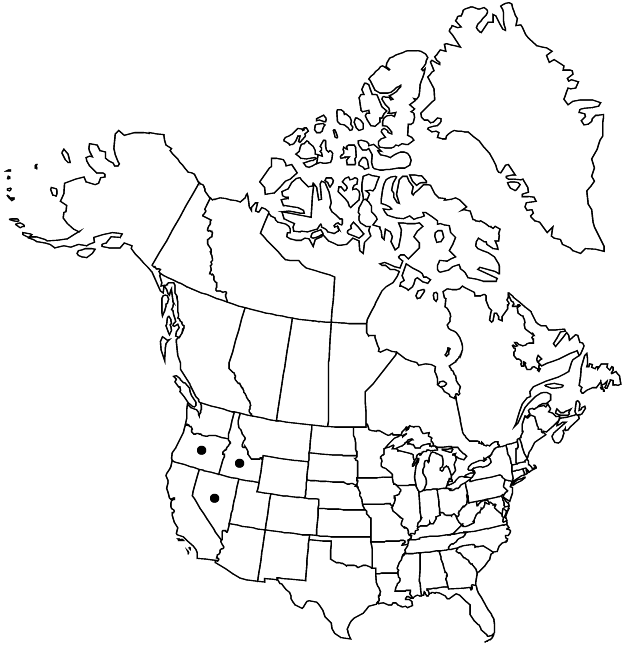Eriogonum salicornioides
Bull. Soc. Roy. Bot. Belgique 42: 187. 1906.
Herbs, spreading, annual, (0.5–)1–3 dm, glabrous, greenish to reddish. Stems: caudex absent; aerial flowering stems erect, solid, not fistulose, 0.2–0.6 dm, glabrous. Leaves basal; petiole 0.5–3 cm, floccose; blade ovate to orbiculate, 0.4–1.5 × 0.4–1.2 cm, white-tomentose abaxially, floccose or glabrous and greenish adaxially, margins plane. Inflorescences cymose, open, 5–25 × 5–25 cm; branches glabrous; bracts 3, scalelike, 1–2 × 1–2 mm. Peduncles absent or erect, straight, slender, 0.1–0.5 cm, glabrous, absent distally. Involucres turbinate, 1.5–2 × 1–1.7 mm, glabrous; teeth 5, erect, 0.4–0.8 mm. Flowers 1.2–1.7 mm; perianth white to pale yellow, glabrous, pustulose proximally; tepals monomorphic, ovate; stamens included, 1.2–1.8 mm; filaments glabrous. Achenes brown, lenticular, 1.6–2 mm, glabrous. 2n = 36.
Phenology: Flowering May–Jul.
Habitat: Clayey flats and slopes, saltbush, greasewood, and sagebrush communities, juniper woodlands
Elevation: 700-1300(-1500) m
Distribution

Idaho, Nev., Oreg.
Discussion
Eriogonum salicornioides is known from Harney and Malheur counties in southeastern Oregon and Elmore and Owyhee counties of southwestern Idaho. Its attribution to Nevada is based on a Percy Train collection (Jun 1934, NY, PAC) from a dry desert valley in northern Humboldt County. Efforts to relocate the species in that state have been unsuccessful.
Selected References
None.